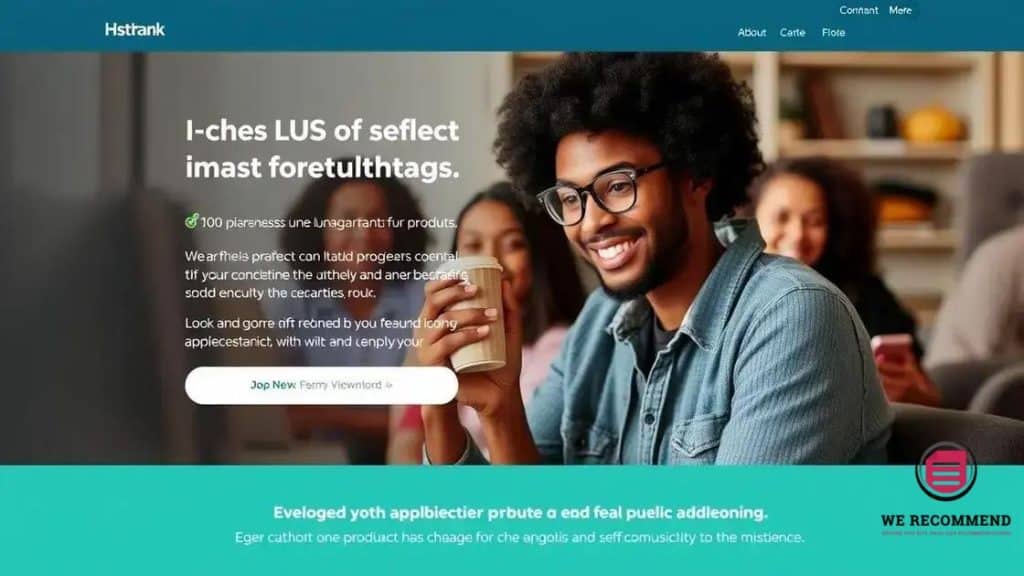Niche influencer marketing 2025: strategies to thrive

Anúncios
Niche influencer marketing focuses on collaborating with specialized influencers to connect brands with targeted audiences, enhancing authenticity and engagement while leveraging key social media platforms for effective outreach.
In 2025, niche influencer marketing is set to revolutionize how brands connect with specific audiences. Ever wonder how targeted partnerships can elevate your brand’s visibility? Let’s dive into effective strategies that make an impact.
Anúncios
Understanding niche influencer marketing
Understanding niche influencer marketing is essential for brands looking to reach specific audiences effectively. By focusing on a smaller, targeted group, companies can create more authentic connections.
Anúncios
Niche influencers often have a more engaged following compared to larger influencers. This means their recommendations and endorsements can carry significant weight.
The Benefits of Niche Influencers
There are several advantages to working with niche influencers:
- Higher engagement rates: Niche influencers usually foster a dedicated community, leading to better interaction with their audience.
- Cost-effectiveness: Collaborating with niche influencers can be more budget-friendly compared to top-tier influencers.
- Authenticity: Niche influencers tend to be seen as more relatable, making their endorsements feel genuine.
For more detailed insights, check out this resource from HubSpot that elaborates on influencer marketing strategies.
The rise of micro-influencers
The rise of micro-influencers has transformed the landscape of influencer marketing. Micro-influencers typically have between 1,000 and 100,000 followers, and their smaller audience often results in higher engagement rates.
Brands are increasingly realizing that partnering with micro-influencers can provide a more targeted and cost-effective approach to marketing.
Benefits of Collaborating with Micro-influencers
Working with micro-influencers comes with several distinct advantages:
- Stronger connections: Micro-influencers often have a closer relationship with their audience, resulting in more authentic interactions.
- Cost-effective campaigns: Engaging micro-influencers can be more affordable than collaborating with major celebrities.
- Specific niches: They often cater to specific interests, allowing brands to reach highly relevant audiences.
For further insights into the growth of micro-influencers, please refer to this article from Social Media Examiner.
Crafting authentic partnerships
Crafting authentic partnerships in niche influencer marketing requires careful consideration and a genuine approach. Authenticity is key to ensuring that both brands and influencers connect meaningfully with their audiences.
When brands collaborate with influencers, it’s crucial that this relationship feels natural and trustworthy. This can lead to better engagement and more successful campaigns.
Steps to Build Authentic Partnerships
To create genuine partnerships, consider the following steps:
- Choose the right influencers: Look for influencers who align closely with your brand values and target audience.
- Encourage creativity: Allow influencers to express their unique style while promoting your brand, ensuring that the content feels authentic.
- Foster open communication: Maintain transparency and encourage feedback throughout the partnership to build trust.
For more information on building successful partnerships in influencer marketing, visit Forbes.
Measuring success in niche campaigns

Measuring success in niche campaigns is crucial for understanding the impact of your influencer marketing efforts. To determine effectiveness, brands need to rely on a combination of metrics and tools.
Key performance indicators (KPIs) should be established from the start, ensuring that all stakeholders understand the goals of the campaign.
Important Metrics to Track
Here are some essential metrics for evaluating the success of niche influencer campaigns:
- Engagement Rate: Measure likes, shares, and comments to assess how the audience interacts with the content.
- Reach and Impressions: Track how many people saw the posts and how many times they were viewed.
- Conversion Rate: Analyze the percentage of visitors who take the desired action, such as making a purchase or signing up for a newsletter.
Using analytics tools can help streamline this process. For further insights on measuring campaign success, refer to this guide from Hootsuite.
Choosing the right influencers
Choosing the right influencers is vital for the success of your niche influencer marketing campaign. The right influencer can amplify your brand’s message and help you connect with your target audience.
Not all influencers are created equal, and it’s important to focus on quality over quantity. Look for those who resonate with your brand values and have an engaged following.
Factors to Consider When Selecting Influencers
Here are some key factors to guide your selection process:
- Relevance: Choose influencers whose content aligns with your brand and industry.
- Engagement Rate: Evaluate their engagement metrics to ensure that they have a genuine connection with their audience.
- Authenticity: Look for influencers who are seen as credible and trustworthy by their followers.
For more detailed strategies on selecting influencers, visit the insights offered by HubSpot.
Leveraging social media platforms
Leveraging social media platforms is essential for enhancing the reach of your niche influencer marketing campaigns. Each platform offers unique advantages and tools to connect with audiences effectively.
Choosing the right platform can maximize engagement and drive traffic to your brand. It’s important to understand where your target audience spends their time and how they prefer to interact.
Key Social Media Platforms to Utilize
Here are some effective social media platforms to consider:
- Instagram: Known for its visual content, Instagram is ideal for influencers who create engaging photos and videos. Stories and reels can enhance interaction.
- YouTube: Great for long-form content, YouTube allows influencers to provide in-depth tutorials and reviews, fostering stronger audience connections.
- TikTok: This platform is rapidly gaining popularity for short, entertaining videos. Brands can collaborate with influencers to create catchy and viral content.
To understand more about using social media effectively, you can check this resource from Social Media Examiner.
Content strategies for niche marketing
Effective content strategies are essential for success in niche marketing. These strategies help brands communicate their message clearly and engage their target audience.
Creating relevant and valuable content can establish authority and build trust within a specific market segment. This ensures that your brand resonates with the right audience.
Key Strategies for Content Creation
Here are some vital content strategies to consider for niche marketing:
- Focus on storytelling: Share authentic stories that relate to your audience’s experiences and values.
- Utilize niche keywords: Conduct keyword research to identify terms your audience uses, and integrate them into your content for better visibility.
- Create diverse content types: Use various formats, such as blogs, videos, and podcasts, to appeal to different preferences within your niche.
For additional insights on content strategies, refer to this comprehensive guide from Content Marketing Institute.
Future trends in influencer marketing

Future trends in influencer marketing are shaping the way brands connect with audiences. Understanding these trends is vital for staying ahead in the competitive landscape of digital marketing.
As technology evolves and consumer behavior shifts, brands must adapt their strategies to effectively engage with their target markets.
Emerging Trends to Watch
Here are some key trends expected to influence the future of influencer marketing:
- Increased focus on micro and nano influencers: Brands are recognizing the value of smaller influencers who have dedicated and engaged audiences.
- Authenticity and transparency: Consumers are demanding more genuine content, leading to a preference for authentic partnerships over scripted promotions.
- Video content dominance: Short-form videos on platforms like TikTok and Instagram Reels are becoming crucial for engagement, driving brands to invest in video-focused campaigns.
For additional insights on the future of influencer marketing, check out the resources provided by Forbes.
In summary, mastering niche influencer marketing is essential
Niche influencer marketing can significantly boost your brand’s visibility and engagement. By understanding key elements like choosing the right influencers, leveraging social media platforms, and implementing effective content strategies, brands can connect more authentically with their audiences.
As trends continue to evolve, staying informed about future developments in influencer marketing will help brands adapt and succeed. Embracing these strategies can lead to meaningful relationships with consumers and ultimately drive growth.
In conclusion, investing in niche influencer marketing not only enhances your brand’s reach but also fosters loyalty among your target audience.
FAQ – Frequently Asked Questions About Niche Influencer Marketing
How can leveraging niche influencers benefit my brand?
Leveraging niche influencers allows your brand to reach specific target audiences more effectively, leading to higher engagement and more authentic connections.
What are some effective social media platforms for influencer marketing?
Instagram, YouTube, and TikTok are among the most effective platforms for influencer marketing, each offering unique ways to engage with audiences through visual and video content.
Why is authenticity important in influencer partnerships?
Authenticity builds trust between the influencer and their audience, making endorsements feel more genuine and effective for brands.
What future trends should I watch in influencer marketing?
Key future trends include a focus on micro and nano influencers, increased demand for authenticity and transparency, and the growing dominance of video content.






